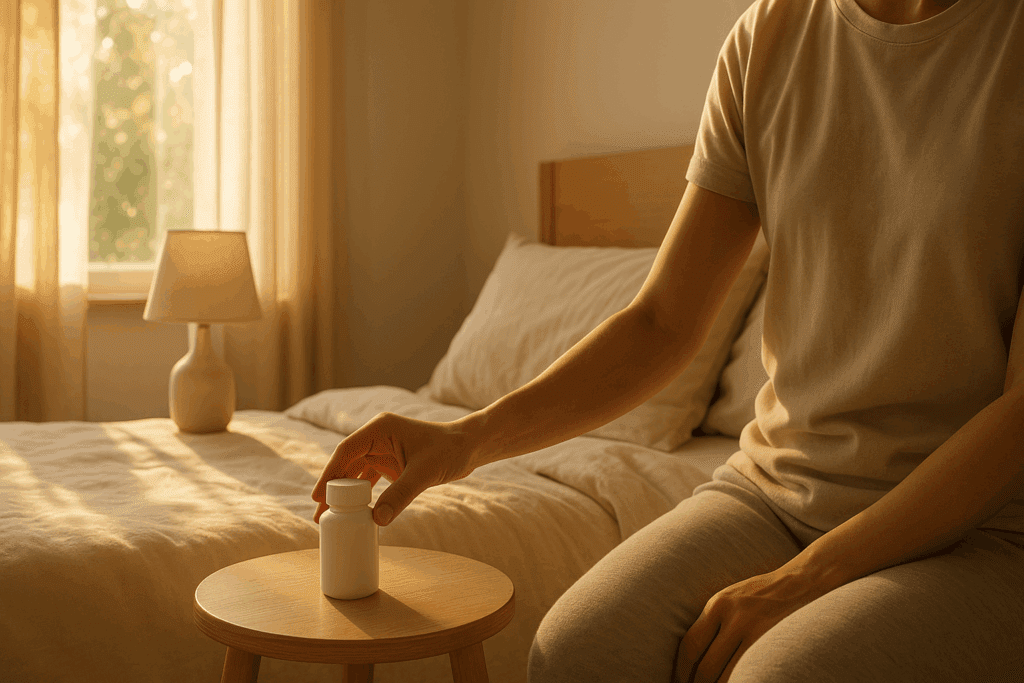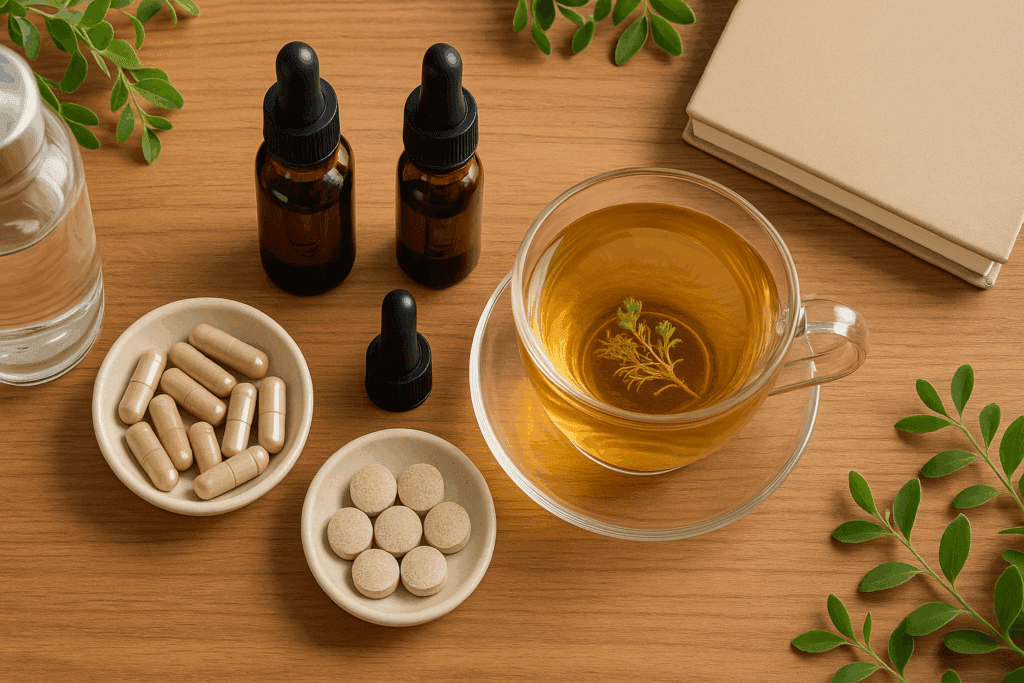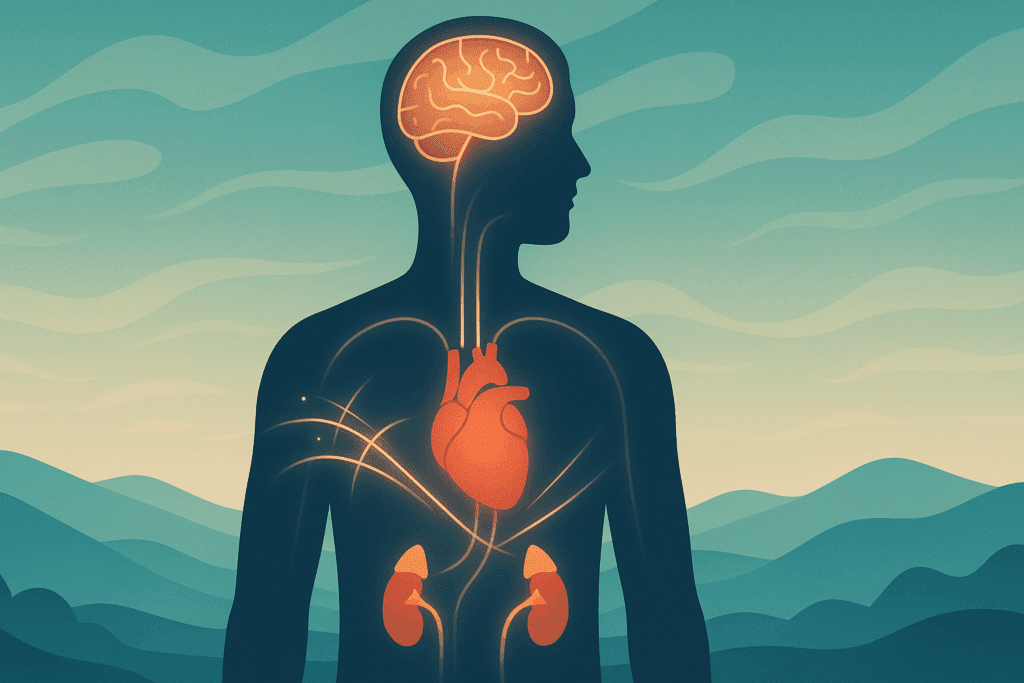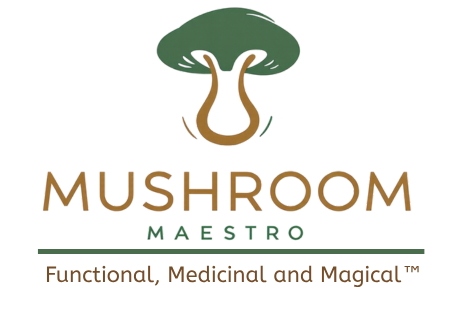Rhodiola rosea has rapidly gained recognition among health-conscious individuals for its remarkable adaptogenic properties, particularly in managing stress and enhancing overall well-being. Derived from a resilient plant that thrives in harsh, mountainous climates, this natural supplement is celebrated for its ability to boost energy, sharpen mental clarity, and stabilize mood without the side effects typically associated with synthetic stimulants. As interest in holistic health solutions continues to rise, a growing number of users are exploring how to integrate Rhodiola effectively into their daily wellness routines. One of the most critical and often overlooked aspects of maximizing its potential is determining the best time of day to take Rhodiola rosea. Timing can significantly influence the supplement’s impact on physical vitality, mental performance, and sleep quality, making it an essential consideration for those seeking optimal results.
You may also like: Unlock Powerful Stress-Relief with Adaptogenic Mushrooms and Stamina Herbal Support

Rhodiola Rosea and Sleep: Balancing Energy Without Disruption
A common concern among new users involves the relationship between Rhodiola rosea and sleep. While not classified as a traditional sedative, Rhodiola can still impact sleep patterns depending on the individual and the timing of administration. For some users, particularly those with already low baseline cortisol levels or heightened adrenal sensitivity, taking Rhodiola too late in the day may interfere with the ability to wind down in the evening. Reports of rhodiola rosea sleepy side effects are relatively uncommon but should not be dismissed outright.
It is essential to understand that Rhodiola does not induce sleep in the way that melatonin or valerian might. Instead, it acts on the central nervous system to promote a more balanced and resilient stress response. However, if taken in the late afternoon or evening, its energizing properties may delay the onset of sleep. For individuals experiencing rhodiola sleep disturbances, shifting the dosage to earlier in the day—preferably before 2 p.m.—can resolve these issues. Thus, for anyone concerned with sleep hygiene, determining the best time of day to take Rhodiola rosea becomes especially pertinent.
Rhodiola Rosea Changed My Life: Real-World Experiences and Testimonials
Among the growing body of anecdotal evidence surrounding adaptogenic herbs, one phrase resurfaces frequently: “Rhodiola rosea changed my life.” This sentiment is echoed by countless individuals who have found lasting relief from stress, mental fog, and low energy through consistent supplementation. Such testimonials, while not a substitute for clinical trials, offer a powerful perspective on how Rhodiola rosea benefits are experienced in everyday life.
For instance, professionals in high-stakes industries report improved decision-making and emotional stability. Parents juggling work and childcare describe feeling more composed and energized. College students facing academic pressure highlight enhanced cognitive performance and reduced anxiety. These transformative stories underline the importance of understanding how to use Rhodiola in a way that complements one’s unique physiological and psychological needs. They also reinforce the significance of identifying the best time to take Rhodiola rosea to amplify its benefits and avoid potential drawbacks.

What Is Rhodiola Supplement: Types, Forms, and Quality Considerations
With a growing market for adaptogens, consumers now face a variety of options when choosing a Rhodiola supplement. From capsules and tablets to liquid extracts and teas, the delivery method can influence both bioavailability and user experience. The most researched and recommended form is a standardized extract containing 3% rosavins and 1% salidroside, typically found in rhodiola rosea tablets and capsules.
It’s important to note that not all supplements are created equal. Third-party testing, ingredient transparency, and adherence to GMP (Good Manufacturing Practices) are essential markers of quality. Consumers should also verify whether the product is derived from Rhodiola rosea specifically, as other Rhodiola species may not provide the same clinical benefits. Understanding what is Rhodiola supplement and how it functions within the broader spectrum of herbal medicine allows users to make informed choices that align with their health goals.
What Is Rhodiola Root: Botanical Insights and Cultural Legacy
Rhodiola root, often overshadowed by its extract, holds a rich cultural and botanical history. Used for centuries in traditional medicine across Siberia, China, and parts of Northern Europe, Rhodiola root was valued not only for its medicinal properties but also for its ability to promote stamina in extreme climates. The root itself is golden in hue and contains the adaptogenic compounds that drive Rhodiola’s therapeutic effects.
Botanically, Rhodiola is part of the Crassulaceae family and thrives in rocky, high-altitude regions. Its resilience in harsh environments mirrors its physiological impact: promoting endurance, vitality, and stress adaptation. Understanding what is Rhodiola root from a botanical and historical perspective deepens one’s appreciation for its continued relevance in modern wellness protocols. For those seeking to integrate nature-based solutions into their daily routines, Rhodiola root represents a time-tested, evidence-backed choice.

What Does Rhodiola Do? Mechanisms of Action and Health Impacts
To answer the question “What does Rhodiola do?” is to delve into the biochemistry of stress adaptation and neuroprotection. Rhodiola influences multiple physiological systems, beginning with its role in modulating the HPA axis. By balancing cortisol production, the herb enables the body to respond more appropriately to stressors without entering a state of chronic fight-or-flight.
In addition, Rhodiola enhances mitochondrial function, improving cellular energy output and reducing oxidative damage. This contributes to the adaptogen’s well-known fatigue-reducing effects. Neurologically, Rhodiola increases the availability of mood-regulating neurotransmitters, providing emotional stability and cognitive clarity. It is this multifaceted action that underscores the wide range of rhodiola supplement benefits and explains why it continues to gain traction in integrative health circles.
What Is Rhodiola Extract Used For: Beyond Stress and Fatigue
While Rhodiola is best known for stress relief and energy enhancement, its applications extend into areas such as immune modulation, metabolic health, and even cardioprotection. Preliminary studies suggest that Rhodiola may help regulate blood sugar levels, improve heart rate variability, and support immune resilience. These additional benefits broaden the adaptogen’s appeal beyond its traditional use as a stress-relief agent.
In clinical practice, practitioners may recommend Rhodiola for conditions such as mild depression, chronic fatigue syndrome, and post-viral fatigue. It is also gaining attention in the field of biohacking and longevity, where users seek to leverage its mitochondrial and antioxidant effects to support healthy aging. As more research emerges, the list of what is Rhodiola extract used for continues to expand, making it one of the most versatile adaptogens available today.
Frequently Asked Questions: Rhodiola Rosea Use, Timing, and Optimization
What is the best time of day to take Rhodiola Rosea for people with irregular work schedules or night shifts?
For individuals with nontraditional schedules, such as night shift workers, the best time of day to take Rhodiola rosea aligns with their personal circadian rhythm rather than the standard solar day. Taking it shortly after waking—regardless of the actual time—helps optimize its energizing and adaptogenic properties. Since cortisol levels rise upon awakening to support alertness, pairing Rhodiola with this natural spike can enhance cognitive focus and mood regulation throughout their wake period. Shift workers who experience erratic sleep-wake cycles may also benefit from cycling Rhodiola use across weeks to avoid over-dependence or overstimulation. To avoid rhodiola sleep disruption, it’s crucial to avoid taking the supplement within six hours of intended sleep, even if that sleep occurs during daylight hours.
Can Rhodiola Rosea be combined with caffeine, and does timing affect the synergy?
Rhodiola rosea and caffeine can produce a synergistic effect on alertness and cognitive stamina when used thoughtfully. When consumed together in the morning, users often experience amplified mental clarity without the jitteriness commonly associated with high caffeine intake alone. However, because Rhodiola may already act as a mild central nervous system activator—especially for those wondering, “Is Rhodiola a stimulant?”—adding caffeine can overstimulate sensitive individuals. Therefore, it’s best to test this combination on low-stress days and during periods of full hydration and nutrition. Spacing the two by at least 30 minutes can help identify whether negative interactions, such as rapid heart rate or anxiety, occur.
Why do some users report feeling drowsy or calm instead of energized after taking Rhodiola?
Although Rhodiola rosea is typically praised for its uplifting properties, some users experience calmness or even drowsiness due to individual neurochemistry. For those with elevated stress hormone levels, Rhodiola’s cortisol-modulating effects can produce a grounding sensation rather than a stimulating one. The experience of rhodiola rosea sleepy effects is often transient and may indicate the body is recalibrating its stress response system. In such cases, taking Rhodiola with food or reducing the dosage can help reframe the effect. Understanding how to use Rhodiola according to your baseline energy and stress levels is crucial to tailoring its benefits without unwanted fatigue.
What is the best time of day to take Rhodiola Rosea for mental clarity during high-pressure events?
For presentations, exams, or high-stakes meetings, the best time of day to take Rhodiola rosea is about 60 to 90 minutes beforehand. This window allows time for the adaptogen to peak in bioavailability and support neurotransmitter balance associated with focus and stress management. In addition to cognitive benefits, Rhodiola helps blunt the cortisol spikes that impair executive function under pressure. For maximal benefit, avoid combining with other performance enhancers like nootropics until you understand Rhodiola’s isolated effects on your physiology. This targeted approach maximizes rhodiola supplement benefits while reducing the risk of overstimulation during mentally demanding tasks.
Are there gender-specific benefits of Rhodiola Rosea for men and women?
Rhodiola rosea benefits for male users may include support for testosterone balance, improved endurance, and more stable mood under stress, especially when paired with resistance training. For women, Rhodiola may support hormonal resilience during menstrual cycles and perimenopausal transitions by modulating stress-related endocrine disruptions. While not a hormone itself, Rhodiola supports the body’s ability to maintain equilibrium across multiple systems, making it valuable for both sexes. When considering what is Rhodiola good for in terms of gender health, personalized timing and dosage should reflect unique hormonal needs and stress profiles. As always, professional guidance is advised for users with endocrine disorders or those taking hormone-based medications.
How much Rhodiola per day is appropriate for athletic performance enhancement?
For athletes, the optimal range is typically between 400 mg and 600 mg of standardized Rhodiola rosea extract daily. Timing plays a critical role—taking Rhodiola approximately 30 minutes before training sessions can help increase oxygen efficiency and reduce post-exertional fatigue. However, athletes must also consider when to take Rhodiola in relation to sleep and other recovery practices. Evening use may prolong physical stimulation and delay recovery sleep, so morning dosing is generally preferred. Monitoring how much Rhodiola should I take based on workout intensity and recovery trends ensures that the supplement supports rather than disrupts performance cycles.
What are some lesser-known arctic root benefits for people in creative or high-intensity careers?
Beyond physical endurance, arctic root benefits include enhanced divergent thinking, emotional resilience, and improved tolerance to psychological stress. These attributes are particularly valuable in fast-paced creative fields where cognitive flexibility and sustained output are critical. The herb’s influence on serotonin and dopamine pathways may also buffer against burnout by improving reward sensitivity and task motivation. For best results, creative professionals should align Rhodiola use with their natural “flow” hours—the part of the day they typically feel most mentally agile. Recognizing Rhodiola’s subtle role in emotional regulation can unlock new dimensions of productivity and well-being in demanding careers.
How does Rhodiola interact with other adaptogens or herbal nootropics?
Rhodiola combines well with other adaptogens such as ashwagandha, schisandra, and ginseng, especially when structured around a targeted goal such as stress relief, hormonal support, or cognitive enhancement. However, users should understand how to use Rhodiola synergistically without duplicating mechanisms or overstimulating the HPA axis. Stacking multiple adaptogens may be helpful for chronic stress, but precise timing becomes even more critical. For example, pairing Rhodiola in the morning with calming adaptogens like holy basil in the evening creates a full-spectrum stress response protocol. Always start with lower doses when stacking supplements and observe effects over several days to fine-tune your regimen.
What does Rhodiola extract do in terms of long-term resilience and aging?
Over the long term, Rhodiola extract benefits include protection against cognitive decline, improved cardiovascular resilience, and sustained mitochondrial efficiency. By mitigating oxidative stress and maintaining cortisol homeostasis, Rhodiola serves as a foundational component of many anti-aging and biohacking strategies. Its capacity to protect telomeres and reduce neuroinflammation also contributes to its longevity-enhancing potential. Users committed to long-term health goals often find that consistent low-to-moderate dosing—particularly in the morning—yields the best results over time. Understanding what does Rhodiola extract do beyond short-term energy spikes opens new avenues for graceful aging and lifelong mental sharpness.
What is the best time of day to take Rhodiola Rosea for shift in circadian rhythm or jet lag?
In situations where circadian rhythms are disrupted—such as jet lag or international travel—the best time of day to take Rhodiola rosea is aligned with the destination’s morning light exposure. Rhodiola can help the body synchronize with new time zones by stabilizing cortisol rhythms and improving wakefulness during the adjusted daytime. Pairing Rhodiola with a walk in natural light and hydration upon waking accelerates the realignment process. For travelers, rhodiola rosea tablets are a convenient option and can be taken with a light meal to support digestion during travel-related gastrointestinal stress. In these cases, Rhodiola acts as a bridge between internal biological clocks and external environmental cues, aiding smoother transitions and faster adaptation.\n\n—\nThis completes the standalone FAQ section. Let me know if you would like this saved to a document or exported.
Conclusion: Unlocking the Full Potential of Rhodiola Rosea Through Optimal Timing
Understanding the best time of day to take Rhodiola rosea is far more than a logistical consideration—it is a key strategy in unlocking the full potential of this remarkable adaptogen. Whether you are seeking relief from chronic stress, cognitive enhancement, hormonal balance, or physical performance gains, the timing of your supplementation plays a crucial role in its effectiveness. By aligning intake with your body’s natural rhythms and unique physiological needs, you can amplify the powerful benefits that Rhodiola rosea offers.
This adaptogenic herb, rich in history and backed by a growing body of scientific evidence, holds promise for individuals at every stage of life. From students and professionals to athletes and individuals recovering from burnout, Rhodiola rosea provides a natural, multi-targeted solution for modern challenges. It is not merely about what Rhodiola does but when and how it is taken that makes all the difference. By respecting its pharmacology and tailoring its use to your daily routine, you can harness the profound impact of Rhodiola rosea for stress relief, emotional stability, and long-term vitality.
In the ever-expanding landscape of herbal medicine, Rhodiola rosea stands out not only for its efficacy but also for its adaptability. As our understanding deepens and formulations improve, the question will evolve from “what is Rhodiola?” to “how can I integrate Rhodiola intelligently into my life?” And the journey begins with something as simple, yet profoundly strategic, as knowing the best time of day to take Rhodiola rosea.
Further Reading:
Rhodiola rosea as an adaptogen to enhance exercise performance: a review of the literature
